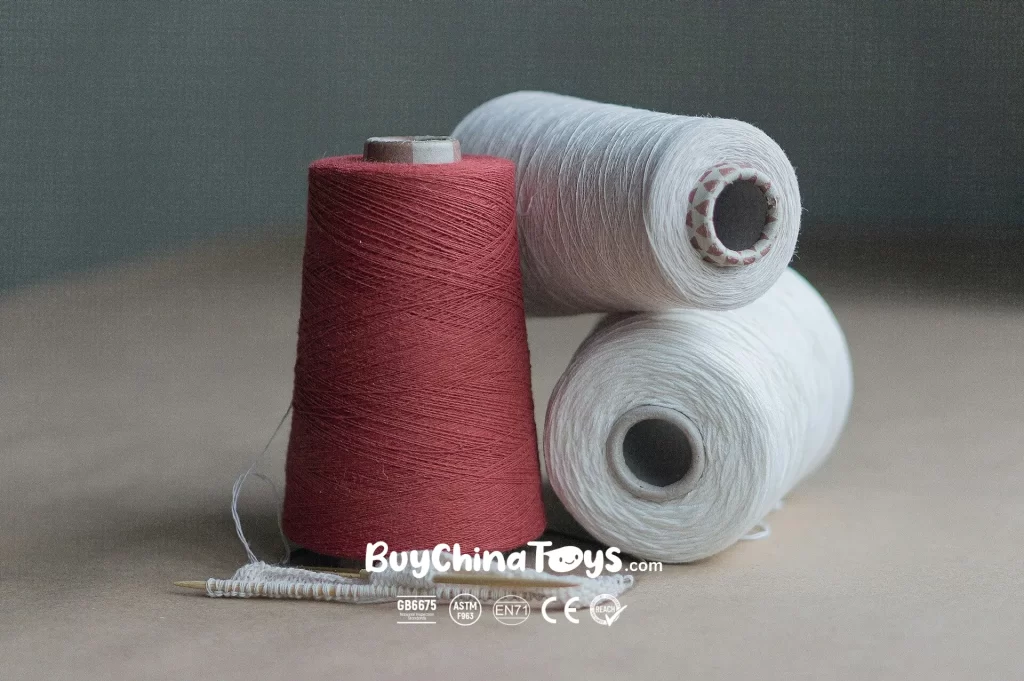Plush toys, universally adored for their cuteness, fluffiness, squishiness, and huggable nature, are crafted from soft plush toy fabrics and filled with fluffy materials such as cotton, wool, or polyester stuffing. The quality of these soft fabrics significantly determines whether a plush toy is good and safe, particularly for children who play with them. Various plush toy fabrics exist, allowing for selection based on specific preferences or requirements. This article will explore the multiple fabrics commonly used in plush toy manufacturing.
Natural or Eco-friendly Fabrics
Plush toy fabrics can be broadly categorized into natural/eco-friendly fabrics and synthetic fabrics. Environmentally friendly fabrics generally incur higher costs than synthetic alternatives, but they offer enhanced safety for children and are biodegradable.
Cotton Fabric Cotton stands as a primary choice among natural plush toy fabrics, derived directly from plants. Manufacturers process cotton plants into thread and then into fabric. Cotton fabrics offer softness and safety for children, though they inherently lack extreme fluffiness. Toy makers often incorporate additional fabrics like Minky or increase stuffing volume to enhance the fluffiness and huggability of cotton plush toys.
Wool Fabric Wool is also considered a natural fabric, originating from sheep fur. Sheep farmers shear the fur when it reaches an appropriate length or thickness, then transport it to thread manufacturers.
Wool thread commands a higher price due to its raw material, sheep fur, which is not always available in substantial quantities. Consequently, wool fabrics are sometimes used only as accents in plush toys, such as hair or tails. This fabric contributes to the softness and fluffiness of a plush toy.
Bamboo Fiber Fabric Bamboo fiber represents another natural fabric utilized in plush toys. Similar to cotton, bamboo fiber derives from bamboo plants, which are readily found, especially in Asian and African countries. Hundreds of bamboo plant varieties exist that can be used for fiber production. Like cotton, this fabric is soft but lacks inherent fluffiness. Nevertheless, it remains a viable and safe option for children’s plush toys.
Synthetic Fabrics
For those seeking more economical options than natural materials, synthetic plush toy fabrics offer a viable alternative. Synthetic fabrics are manufactured from chemical substances like petroleum or plastic.
These fabrics are generally more affordable than natural fabrics because their production does not depend on waiting for specific plants to grow. Instead, manufacturers process chemical substances into fabric. Several synthetic fabrics are commonly employed for plush toys.
Minky Fabrics. Most modern plush toys are now made from Minky fabrics. This fabric possesses all the desirable characteristics for creating high-quality plush toys: it is soft, fluffy, and easily stretchable. Minky fabrics, being polyester microfiber, inherently produce a soft texture. Minky fabrics enhance the fluffiness of plush toys, particularly when generously filled with stuffing materials.
Fleece Fabrics Fleece is another synthetic fabric frequently used for plush toys. This fabric is soft and fluffy, similar to Minky, but it is thinner, lighter, and more durable than Minky. Toy makers use this fabric to produce plush toys that children can frequently play with outdoors. Fleece, like other synthetic fabrics, is also made of polyester.
Faux Fur Faux fur is a synthetic fabric used by toy makers to make plush toys. As its name suggests, faux fur resembles animal fur but is not derived from real animal sources. This fabric is also polyester-based and engineered to mimic fur characteristics. Toy makers use this fabric to create fur accents in plush toys, such as on tails or lion’s manes.
Toy factories and makers select various plush toy fabrics based on their needs. When they require high-quality yet environmentally friendly plush toys, they might opt for cotton or wool fabrics. However, when they aim to produce affordable toys accessible to every child, they may choose synthetic fabrics like Minky or Fleece.
Final Note
Handmade plush toys can also incorporate a variety of fabrics. Buy China Toys, a plush toy manufacturer from China, produces diverse plush toys using various fabrics to ensure high quality. They often combine two or three fabrics to create more realistic plush toys; for instance, they might use Minky and Faux Fur to craft lion plush toys. They also meticulously select high-quality fabrics for their products to guarantee the quality and safety of the plush toys, especially those intended for children.


